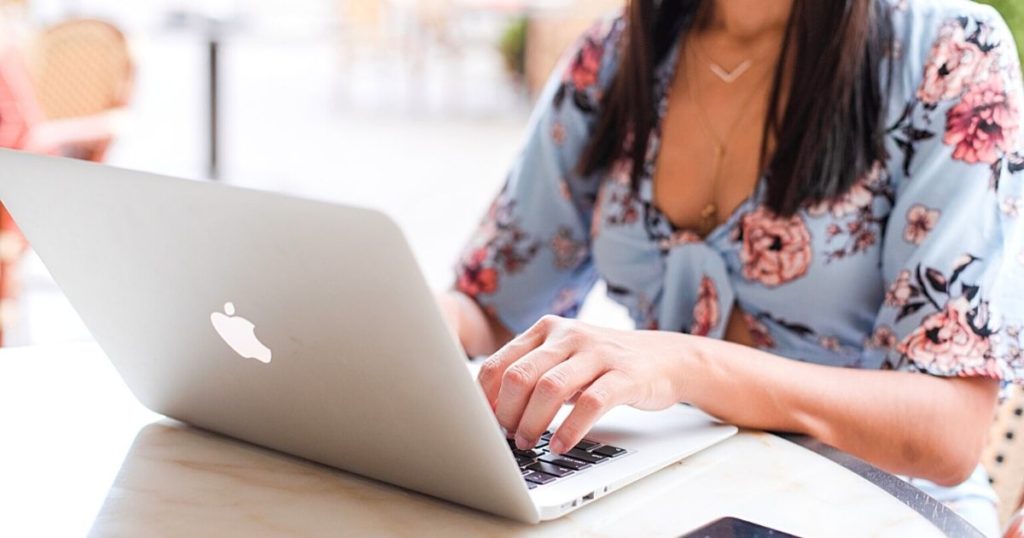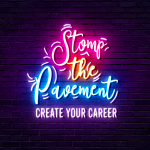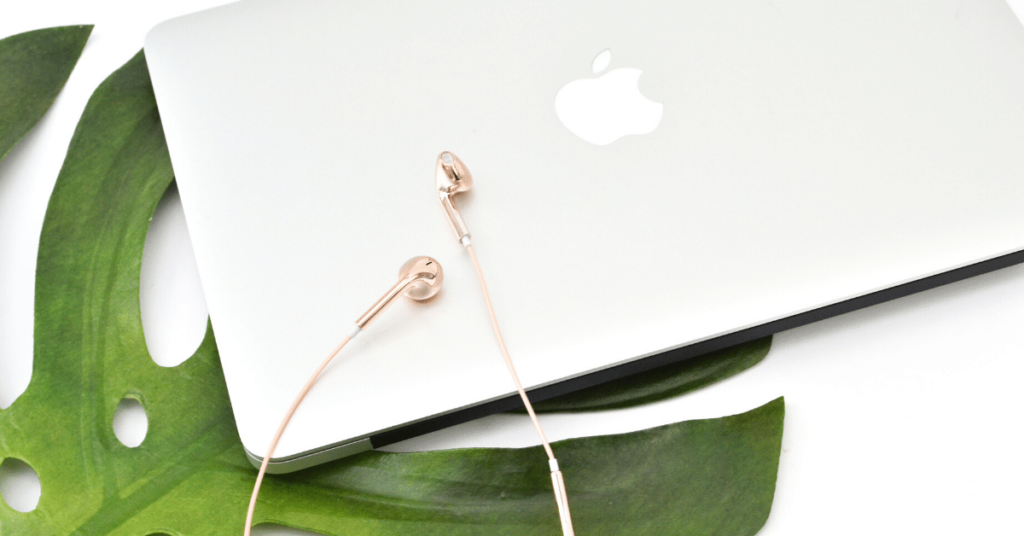Knowing how to write a cover letter is one of the most confusing parts of looking for a job.
“Do I even need one?” “What does a modern cover letter look like?” and “What’s the best cover letter format?” were just some of the questions I used to get from clients in Career Services.
In this guide, I’ll break down the purpose of a cover letter, the 3 must have paragraphs, and give you my insider tips for writing the perfect cover letter.
First, let’s answer the most common cover letter question:
“Do I really need one?”
The short answer: yes.
Employers get a lot of applications for open positions, so you need to do everything you can to stand out. In your resume, it’s harder to show your personality and excitement. Also, if you skip the cover letter, you’ll automatically be behind everyone that sent a resume and cover letter.
Here’s another important cover letter tip: you should write a different one for every position you’re applying for.
I know, I know: that’s not what you wanted to hear. BUT, there is good news here!
Even though you have to write a different cover letter for each job, there’s a super simple formula for writing them.
Once you learn these easy steps to format your cover letter, it becomes much faster to customize them.
I’ll explain everything you need in this guide, so you’ll be a cover letter pro soon! Let’s start by going a little deeper into the purpose of a cover letter.

How to write a cover letter step 1: Know its purpose
I know writing a cover letter seems boring, so I want to make sure you really understand why you’re doing it.
When you have a clear purpose for writing, esp a document as important as a cover letter, it becomes WAY easier to put time into making it amazing.
Here’s how I view the purpose of a cover letter:
- The job description is a list of what they want
- A resume is a list of what you’ve done
- Your cover letter shows how they’re the same
Your cover letter is the bridge between the job description and your resume.
It directly connects YOU and your experiences to the job- that’s crucial!
Dismissing cover letters or submitting the same one because it’s easier isn’t going to serve you. You need to build that direct connection to the job and company.
After all the time spent on your resume, don’t throw it away by not building them the bridge to it!
Check this out if you’re still confused about the purpose of a cover letter !
Okay, now that we know why we’re writing cover letters, let’s dive into how to write a cover letter. Let’s start by going over the best cover letter format, then breaking it down paragraph by paragraph!
Cover letter format
A lot of my clients overthought how to write a cover letter for a job vs how to write a cover letter for internships, when it’s the same simple format for both.
This cover letter format works for any industry and position. Like I said before, the purpose of your cover letter is to build that bridge between you and their job, so it’s more important to focus on writing an amazing cover letter instead of formatting it fancy.
Here’s the big picture of how your cover letter should look:
- Heading (here’s my quick guide on how to format your cover letter’s heading)
- Address them by name- Dear [NAME]:
- First paragraph: introduce yourself and POW
- Second paragraph: dive deep into 1 experience
- Optional third paragraph to expand on another experience
- Fourth paragraph: thank you and goodbye
Now that you know the overall cover letter format, let’s break down how to write each of the parts of a cover letter!

Paragraph 1: Introduce yourself and POW
The first step of how to write a cover letter is a simple introduction.
Start with who you are, the position you’re applying for, and how you found out about it in 1 or 2 concise, professional sentences.
80% OF JOBS ARE ON THE HIDDEN MARKET—
LEARN HOW TO FIND THEM IN THIS FREE WORKSHOP
Are online job apps making your career sour? The key to candy coating your career is networking!
In this FREE workshop, I’ll teach you how to ditch your resume & grow the best resource you have as a job seeker: your network!
Here’s a cover letter example of a quick introduction:
I am writing to apply for the Project Manager position at NPR, which I heard about through idealist.org. As a recent graduate of Ithaca College with a degree in Communication Studies, I am prepared to succeed in this vital role.
You can state your current position or, if you’re still in school or recently graduated, your major, school, and when you graduate. Again, this is just a quick intro to your background.
Finally, this paragraph needs to end with some POW. What do I mean by that?
Throughout your cover letter, you want to show your passion for the position you’re applying for. Let them see you’re excited for the work you’ll be doing and committed to success.
Get them excited about your excitement!
This sentence is your first chance to WOW them with your passion for this position!
Here are 2 examples of POW sentences for your cover letter:
These are just to give you an idea, they’re not templates or rules. Use your imagination and show them YOUR personality and passion!
- My previous experience interning at an advocacy center for survivors of domestic abuse, sexual assault, and sex trafficking, coupled with my passion for altering the circumstances that enable domestic and sexual violence, have prepared me to serve in this position as a knowledgeable and dedicated employee.
- I’m an adaptable, creative* teacher and passionate about play-based education* and creating an interactive, inclusive* learning environment for each of my students, which will make me an excellent fit for Philadelphia’s public schools.
*In this cover letter example, the starred words are keywords taken directly from the job description. A great way to directly connect your experiences to the position (again, the purpose of a cover letter!) is to use language from the job description in your cover letter. We’ll talk more about this later!
In your POW sentence, it’s vital you emphasize the value you will bring to them, not the other way around.
Make sure you avoid sentences like “this will be a really great experience for me” or “this will help me grow and improve my skills.”
It might sound harsh, but they don’t care about you (yet).
That doesn’t mean they won’t care about your growth once they hire you, but right now you need to convince them you’re worth investing in.
They know they have a lot to give- first, you need to show them what you have.
Overall, this paragraph is about a quick introduction to you and your passion for the position.
Applying for a job you’re not passionate about AT ALL? I feel ya. Take a quick detour to play this TED Talk on exploring careers and finding your purpose!
Start with telling them what you’re applying for and how you found it, then give them your current position and education, and, finally, end with a POW sentence that shows your excitement and personality.
Alright, let’s move on to how to write the body of your cover letter!
Paragraph 2: Dive deep
The second paragraph of your cover letter is about focusing on your most relevant, impressive experience and letting them know how you’ve developed and used the skills they’re looking for.
You want them to know how your experience relates to their job and why you’re uniquely qualified to succeed.
Do NOT just write the bullets from your resume as sentences- that’s repetitive, unnecessary, and a waste of everyone’s time.
Instead, explain in detail the related and impressive parts of the position, using keywords from the job description to do so.
Some examples of details to include are
- What you did daily and how
- Problems you overcame and the steps you took
- Teams you worked on or led and what made you an excellent group member or leader
- Unique knowledge or skills you gained in the position
Basically, anything that paints them a picture of YOU as an employee!

The most important part of your second paragraph is to use keywords from the job description when writing about your past experiences. This creates a direct connection from you to the job you’re applying for- something they’ll be looking for!
That’s really the secret to making sure your cover letter is a bridge from your resume to their job: using language from the position description to describe an experience from your resume.
If you do this, your cover letter will serve its purpose each and every time!
Paragraph 3: Rinse and repeat (Optional)
This part of a cover letter is optional. If you have 2 related and impressive experiences for the position, then describe the second one in this paragraph.
80% OF JOBS ARE ON THE HIDDEN MARKET—
LEARN HOW TO FIND THEM IN THIS FREE WORKSHOP
Are online job apps making your career sour? The key to candy coating your career is networking!
In this FREE workshop, I’ll teach you how to ditch your resume & grow the best resource you have as a job seeker: your network!
This paragraph follows all of the rules of the last one- using keywords, not copying your resume, including details, etc.
What’s important to remember is your cover letter should only be one page.
Unlike resumes, there’s no flexibility when it comes to the length of your cover letter.
If this paragraph makes it go over, then you have to trim both paragraphs or cut one of them- whichever works better for you!
Don’t feel any pressure to squeeze in this paragraph just to show more experience. When it comes to your cover letter, we want quality over quantity.
If you have only 1 stellar experience, then just talk about it in depth. Focus on the quality of your cover letter, and you’ll be good!
Paragraph 4: Thank you and goodbye!
The last paragraph of your cover letter is the easiest. Honestly, it’s a stretch to even call it a paragraph. It’s really just a sentence- which is all it needs to be.
For the last paragraph, just thank them for the opportunity, list the phone number and email they can use to reach you, and add another few words about your passion.
One quick thing to remember is: don’t be presumptuous.
I’ve seen too many clients with sentences like “I look forward to our interview.” You haven’t gotten that far yet, so don’t assume you have.
Be confident, not presumptuous!
Here’s a cover letter example of this sentence:
Thank you for your time and consideration. If you are interested in further discussing how my unique experiences have prepared me to be a dedicated, excited researcher, you can reach me at olivia@stompthepavement.com or (123)-456-7890.
This paragraph is just a quick way to thank them, show your passion one last time, and let them know how they can reach you. End it by saying “Sincerely,” and typing your name.
Click here to learn about the one thing you must DELETE from this part of your cover letter!
Your cover letter is how you establish a direct connection between your resume and the position description. If you use this format for your cover letters, it’ll be much easier to write a new one for each position you apply for. Make sure you demonstrate your passion and excitement throughout your cover letter, use keywords from the job description, and dive deep into one or two experiences from your resume.
You’re a fantastic employee, so your cover letter should show them how great you are! Use this guide on how to write a cover letter and take the time to add your personality and keywords, and you’ll land jobs in no time!
Ready to stop relying on cover letters? Grab my guide on the 10 best strategies to network with confidence and transform your career!







